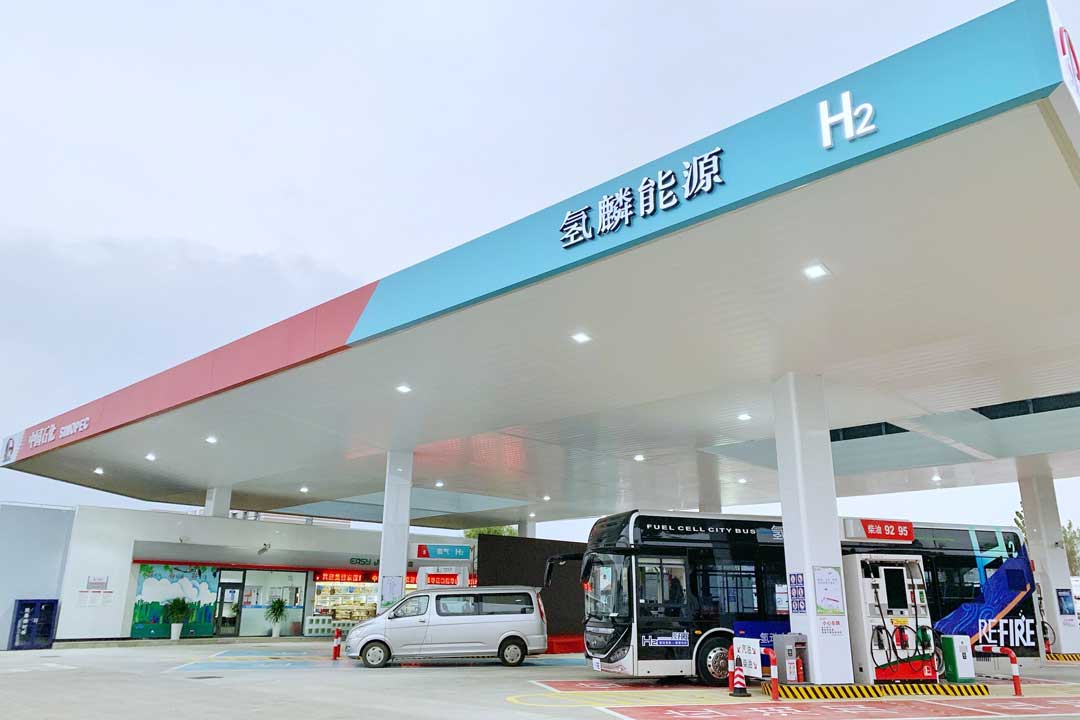China is developing hydrogen fuel cell vehicle industry
A Sinopec gas station in Shanghai can refuel hydrogen fuel cell vehicles in addition to gasoline and diesel. There is the word “H2” on the roof of the gas station, which means hydrogen, which can be seen clearly from a distance.
According to the report, this is a “composite gas station” that is a combination of gas stations and hydrogen refueling stations that China has encouraged in terms of policies for the rapid expansion of hydrogen infrastructure. Except for ordinary cars to be parked in front of the refueling machine, and hydrogen fuel cell vehicles to be parked in front of the hydrogen refueling machine, there is not much difference between them and ordinary gas stations. A gas station staff member said: “JD Logistics has the largest number of vehicles for hydrogen refueling. It can refuel 150 cars a day.”
Shanghai, which has adopted the slogan of “Hydrogen Energy Port”, plans to substantially increase the number of hydrogen refueling stations to 12 by 2025. The rapid expansion of hydrogen fuel cell vehicles’ core infrastructure hydrogen refueling stations is also the goal of China’s largest city. Shanghai proposes to expand the current 9 hydrogen refueling stations to 78 by 2025.
At present, Beijing has built the world’s largest hydrogen refueling station with a daily supply of 4.8 tons of hydrogen. It has recently been put into trial operation. The hydrogen refueling station can refuel 16 cars at a time, and can refuel up to 600 cars a day. Chongqing, which built three hydrogen refueling stations for the first time this year, also plans to increase the number of hydrogen refueling stations to 10 by 2022.
The report believes that the lack of hydrogen refueling stations is the biggest obstacle for consumers to buy hydrogen fuel cell vehicles. Last year, the sales volume of hydrogen fuel cell vehicles in China was only 1,177. Considering that the overall sales of cars exceed 20 million, this is a very low level. Moreover, commercial vehicles such as buses and trucks account for the vast majority of hydrogen fuel cell vehicles produced and sold, and passenger vehicles are hardly found. Therefore, the rapid expansion of hydrogen refueling stations will play a decisive role in China’s hydrogen fuel cell vehicle industry from the demonstration stage to the commercialization stage.
On the basis of the country’s full support policy, China, which has successfully cultivated the world’s largest electric vehicle market centered on pure electric vehicles (BEV) and hybrid electric vehicles (PHEV), has also begun to turn its attention to cultivating relatively backward hydrogen fuel cell vehicles industry.
Previously, the Chinese government set a specific goal for commercialization of fuel cell vehicles by 2035. With the gradual completion of hydrogen infrastructure, Chinese auto companies have also begun to turn their attention to the hydrogen fuel cell vehicle market. SAIC Maxus (MAXUS) launched the first hydrogen-electric utility vehicle EUNIQ7 in September last year. Various vehicles that utilize hydrogen energy have also appeared one after another, and the diversity of the market has continued to expand. In the exhibition area of the International Hydrogen Energy and Fuel Cell Vehicle Conference that opened in Shanghai on June 8, hydrogen electric bicycles attracted people’s attention. This hydrogen electric bicycle can charge 50 grams of hydrogen in 1 minute and can travel 70 kilometers with a full charge of hydrogen.
(The above information comes from China Reference News Network)

